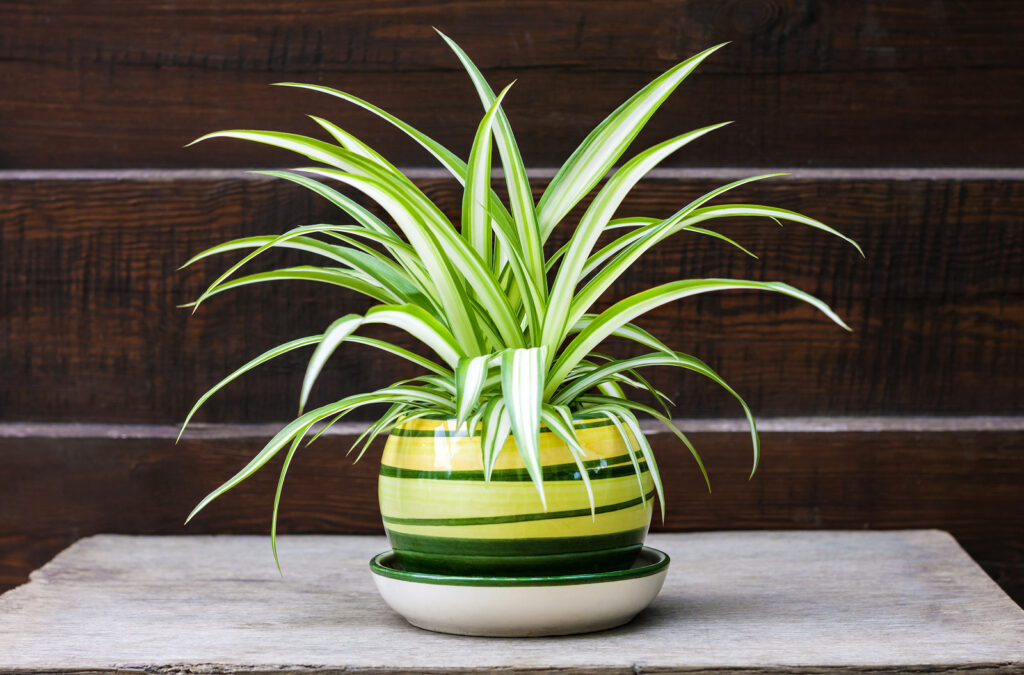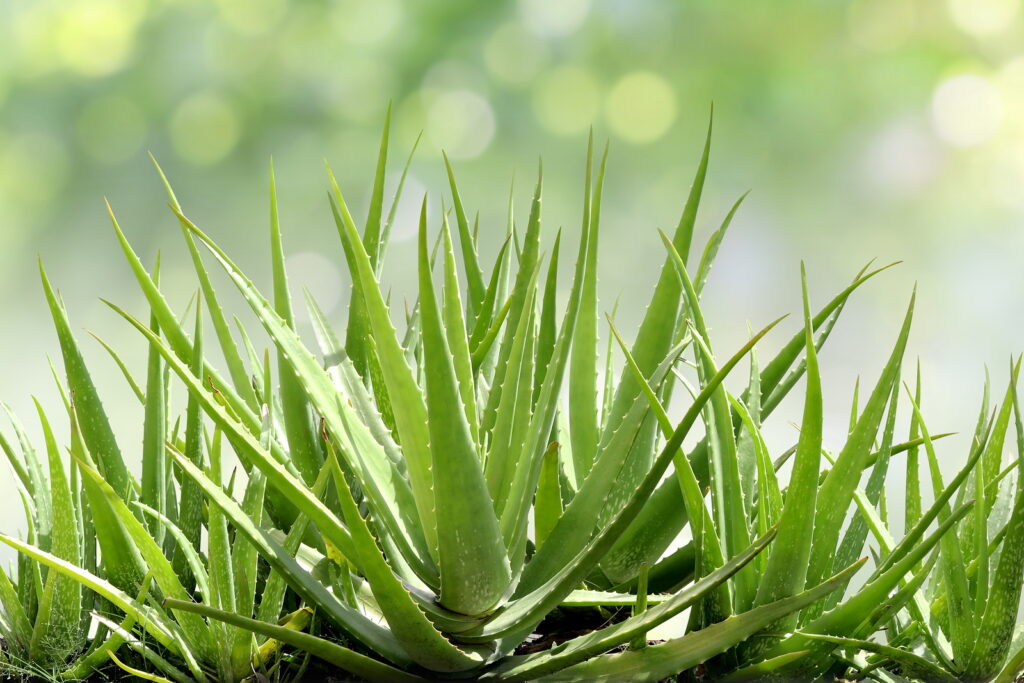Houseplants That Purify Indoor Air
Bringing houseplants into your home not only adds a splash of green to your decor but also helps to improve air quality. Certain houseplants have been shown to filter toxins, increase humidity, and release oxygen, creating a healthier living environment. Here are some of the top air-purifying plants, along with tips on how to grow and care for them.

Spider Plant (Chlorophytum comosum)
Spider plants have graceful, arching leaves with green and white stripes, making them a stunning addition to hanging baskets or tabletops.
Air-Purifying Qualities: Spider plants are champions at removing carbon monoxide, formaldehyde, and xylene from indoor air. They also release oxygen and are safe for pets.
How to Grow:
- Light: Bright, indirect sunlight.
- Water: Keep soil evenly moist but not soggy. Allow the top inch of soil to dry out between waterings.
- Care Tip: Spider plants are low-maintenance and produce baby “spiderettes,” which can be propagated easily.
Read more at: How to Grow Spider Plant

Snake Plant (Sansevieria trifasciata)
With its tall, sword-like leaves and striking variegated patterns, the snake plant adds a modern, architectural element to any room.
Air-Purifying Qualities: Snake plants are excellent at absorbing carbon dioxide and releasing oxygen during the night, making them ideal for bedrooms. They also filter benzene, formaldehyde, and trichloroethylene.
How to Grow:
- Light: Tolerates low to bright indirect light.
- Water: Water sparingly, letting the soil dry out completely between waterings.
- Care Tip: Snake plants thrive on neglect and can survive in various conditions.
Read more at: How to Grow Snake Plant

Peace Lily (Spathiphyllum)
Peace lilies have glossy, dark green leaves and elegant white flowers that resemble calla lilies, adding a touch of sophistication to your home.
Air-Purifying Qualities: Peace lilies are known for filtering out ammonia, benzene, formaldehyde, and trichloroethylene. They also increase indoor humidity.
How to Grow:
- Light: Low to moderate indirect light.
- Water: Keep the soil moist but not waterlogged. Mist occasionally.
- Care Tip: Peace lilies are sensitive to overwatering, so ensure good drainage.
Read more at: How to Grow Peace Lily

Boston Fern (Nephrolepis exaltata)
The Boston fern’s feathery, arching fronds create a lush, tropical vibe, making it perfect for hanging baskets or plant stands.
Air-Purifying Qualities: Boston ferns are effective at increasing humidity and removing formaldehyde and xylene from the air.
How to Grow:
- Light: Bright, indirect sunlight.
- Water: Keep the soil consistently moist, and mist the leaves regularly to maintain humidity.
- Care Tip: Place the fern in a bathroom or kitchen where humidity levels are naturally higher.
Read more at: How to Grow Sword Fern and Boston Fern

Aloe Vera
Aloe vera’s thick, spiky leaves with a vibrant green hue make it an attractive and functional centerpiece for desks or windowsills.
Air-Purifying Qualities: Aloe vera not only purifies the air by removing formaldehyde and benzene but also doubles as a medicinal plant for soothing burns and skin irritation.
How to Grow:
- Light: Bright, indirect sunlight.
- Water: Allow the soil to dry out completely before watering.
- Care Tip: Use well-draining, sandy soil to prevent root rot.
Read more at: How to Grow Aloe

Rubber Plant (Ficus elastica)
Rubber plants feature large, glossy leaves that add a bold, tropical look to your indoor space, making them a statement piece.
Air-Purifying Qualities: Rubber plants are efficient at eliminating carbon monoxide, formaldehyde, and other pollutants while producing high levels of oxygen.
How to Grow:
- Light: Medium to bright indirect light.
- Water: Keep soil evenly moist, but avoid overwatering.
- Care Tip: Wipe the leaves with a damp cloth to remove dust and maintain their ability to filter air.
Read more at: How to Grow Ficus – Indoor Figs

Golden Pothos (Epipremnum aureum)
Golden pothos has cascading vines with heart-shaped leaves that feature striking green and yellow marbling, making it a versatile and charming plant for any spot.
Air-Purifying Qualities: Golden pothos is a hardy plant that removes toxins like benzene, formaldehyde, and xylene. It’s also incredibly easy to grow.
How to Grow:
- Light: Low to bright indirect light.
- Water: Let the soil dry out between waterings.
- Care Tip: Train the vines to climb or drape them from a hanging basket for decorative appeal.
Read more at: How to Grow Pothos
How Do These Plants Purify the Air?
These plants work through a natural process called phytoremediation, where they absorb toxins through their leaves and roots. Harmful chemicals are then broken down and neutralized by microorganisms in the soil. Plants also increase indoor oxygen levels through photosynthesis, making the air fresher to breathe.
Creating Your Air-Purifying Indoor Garden
To maximize the benefits of these plants:
- Place a variety of air-purifying plants in different rooms.
- Ensure adequate light and water for each plant’s specific needs.
- Avoid overcrowding; plants need good airflow to thrive.
By adding these natural air purifiers to your home, you’ll create a greener, healthier, and more vibrant indoor space.
Related articles:







